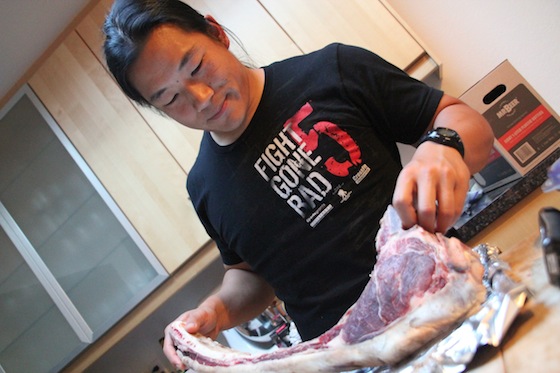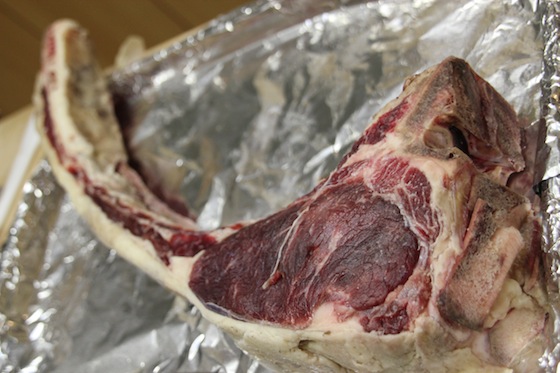Cooked A Flintstone Chop

Fred Flintstone: I know what you're going to say. I don't know anything about all of this, right?
Wilma Flintstone: Right!
Fred Flintstone: Has that ever stopped me from being an expert before?
Yesterday's butchering session left me with some choice cuts of grass-fed beef. The most prominent of these was the flintstone chop I secured when I was cutting the ribs up.

This cut is a ribeye still attached to the rib. Normally in the store, you'd see this as three different pieces: the ribeye, the beef rib, and the short rib.

How was I planning to cook this bad boy? I took some tips from the meat masters of 4505.
The first step of preparation was a rub of delicious spices. I poured that all over it and rubbed it into the meat.

Next, I preheated the oven to 250 degrees and stuck a thermometer into the middle of the ribeye section.

I kept it in the oven until it had reached an internal temperature of 130 degrees, which took a while but eventually did get there.

I threw it on the grill to sear it for a few minutes on each side.

When I pulled it off the grill, it looked great, but I had to let it cook for about 5-10 minutes.

When I cut the ribeye open, it was cooked perfectly. It was just the way we like it, beautifully red from top to bottom. Also, the rib section was cooked a bit more than the steak, but it was also juicy and tender.

This was fantastic. It tasted delicious. The steak was flavorful and the ribs were juicy because of the slow roasting, and it was very simple to prepare. I very much recommend this way of cooking steak, and I plan to do it again for my other big steaks. I got a monster porterhouse that I can't wait to do this to. A big thumbs up for both the flintstone chop and this cooking method.
Related Items:
Whole Beast Butchery: The Complete Visual Guide to Beef, Lamb, and Pork
blog comments powered by Disqus
